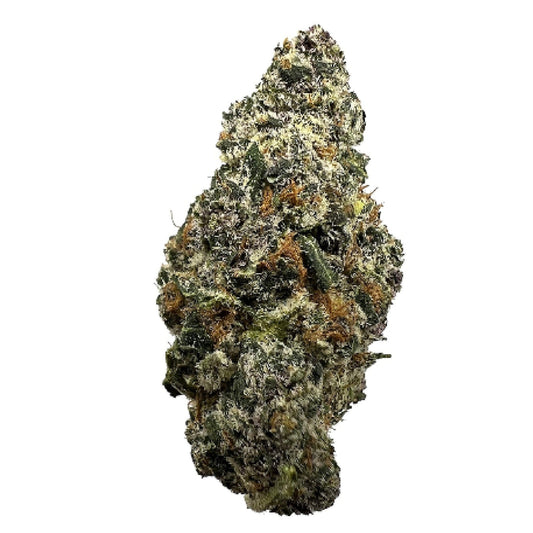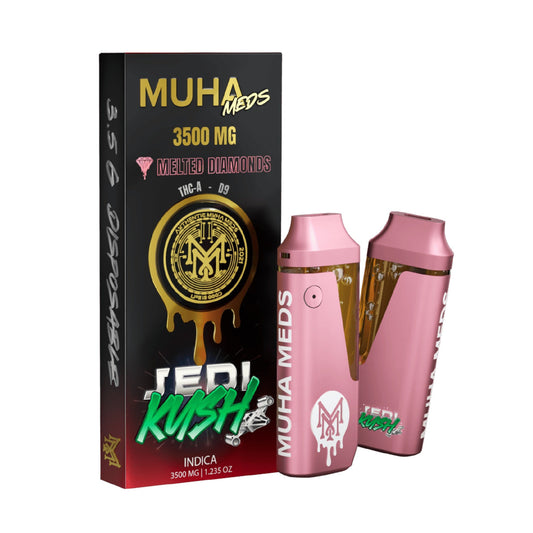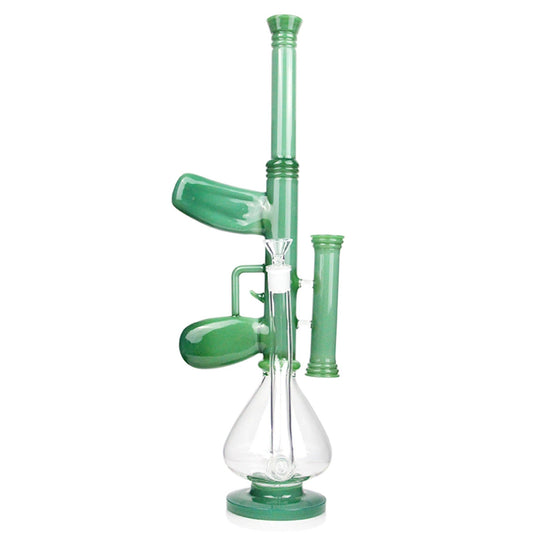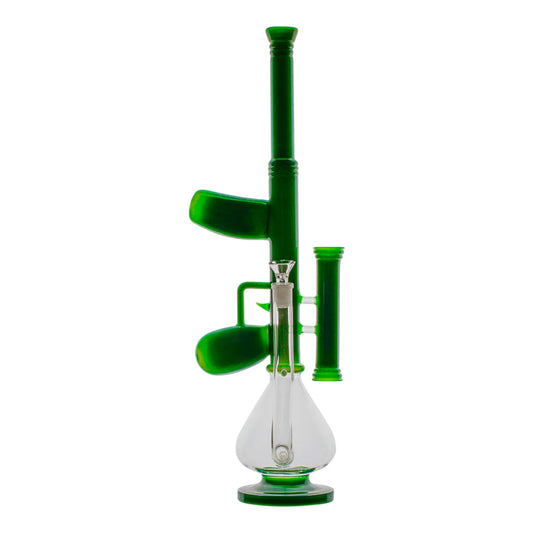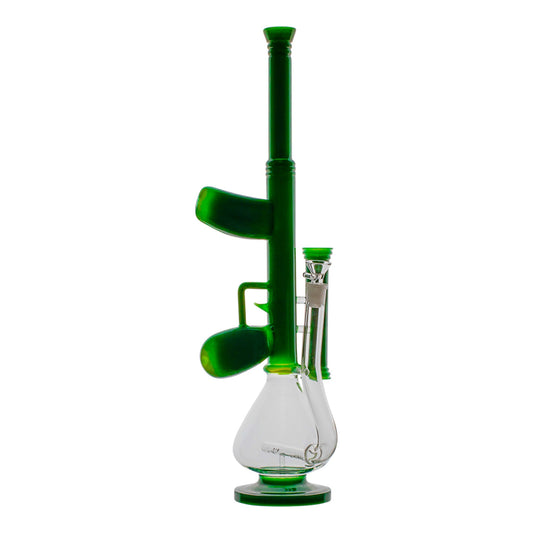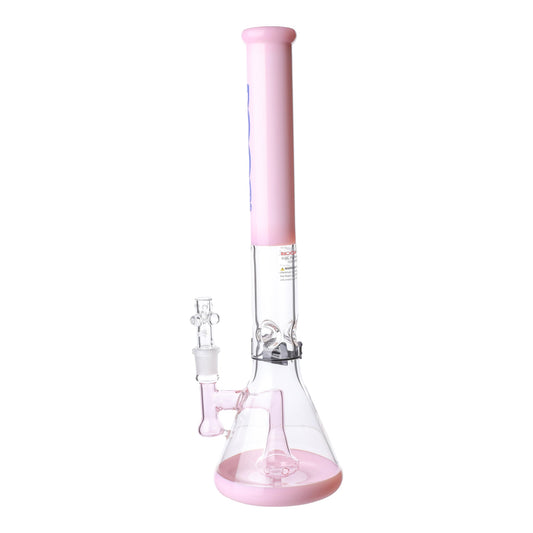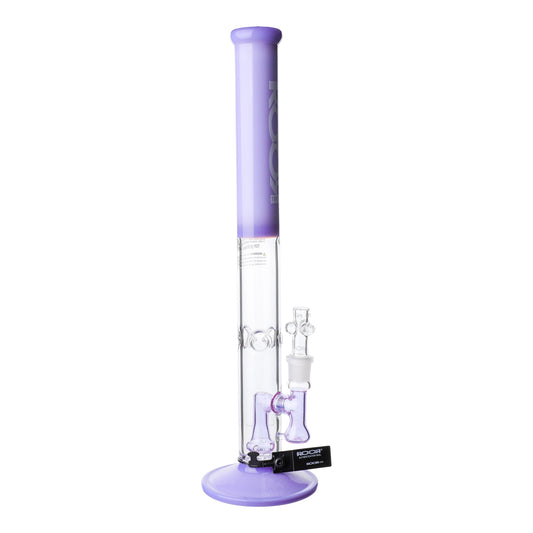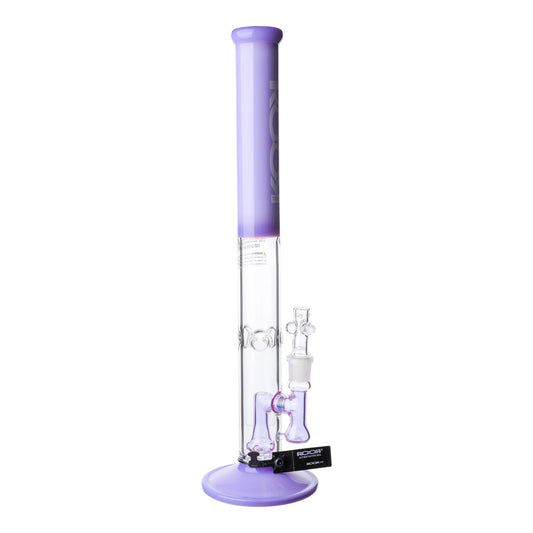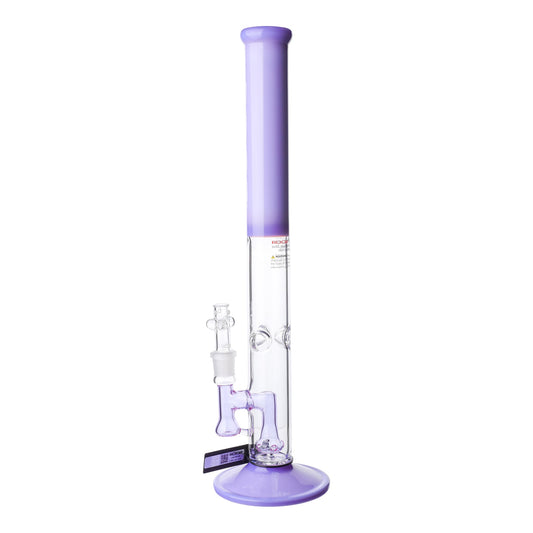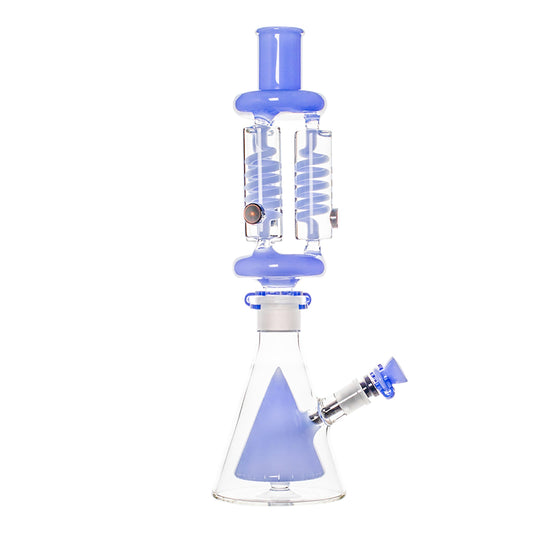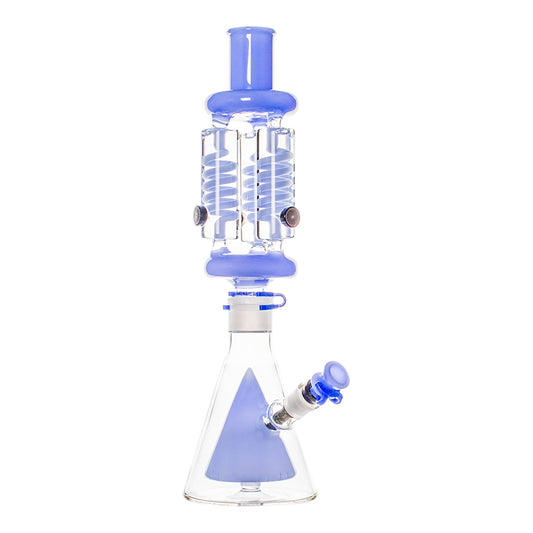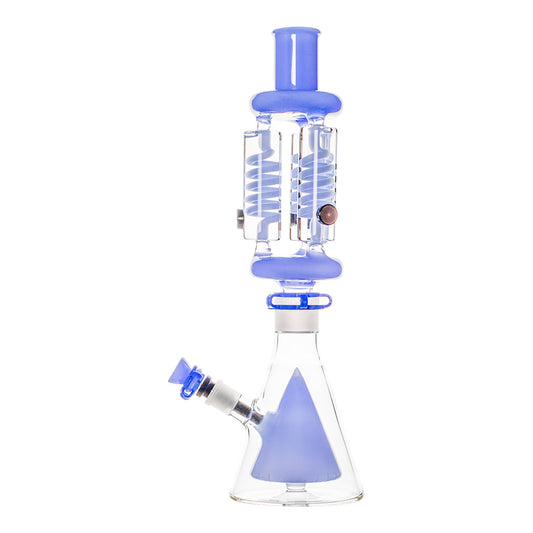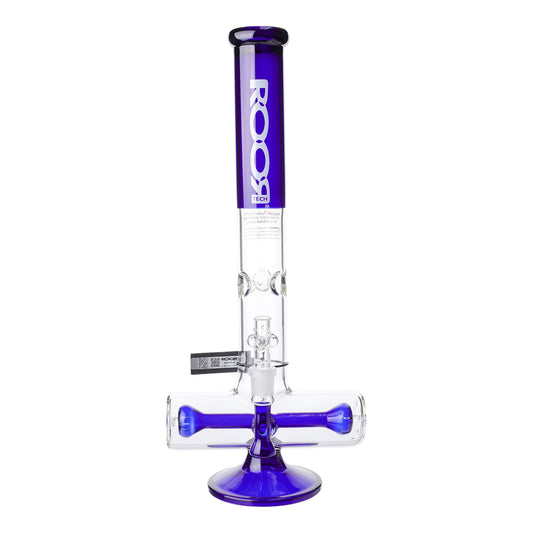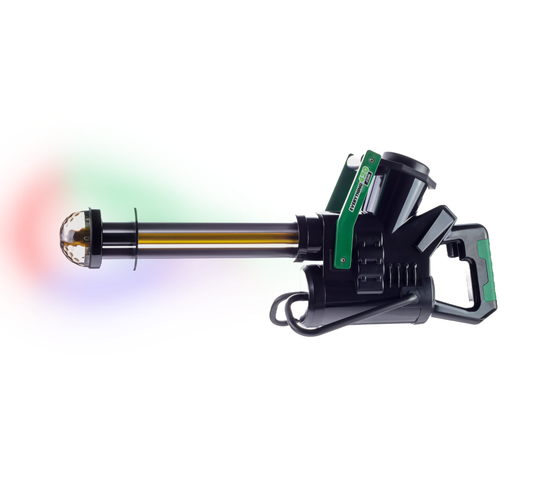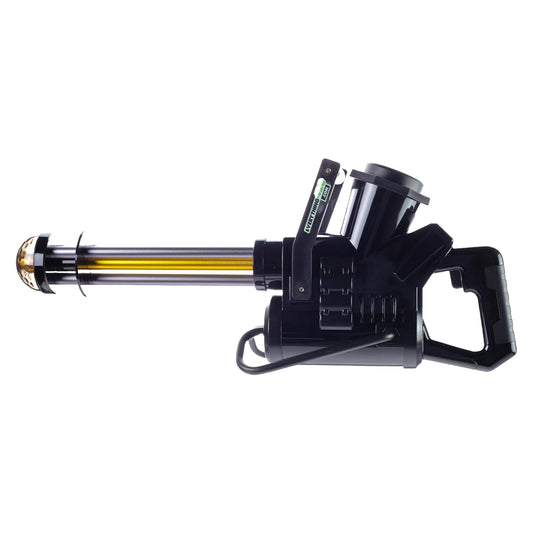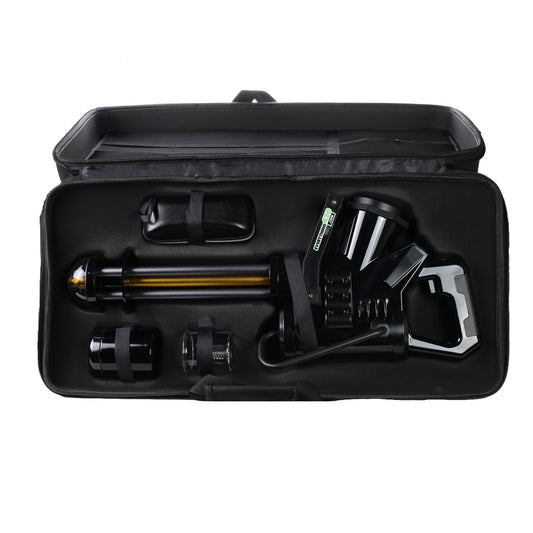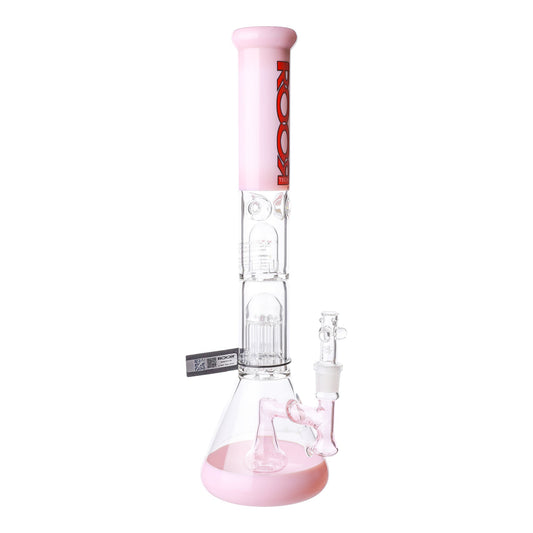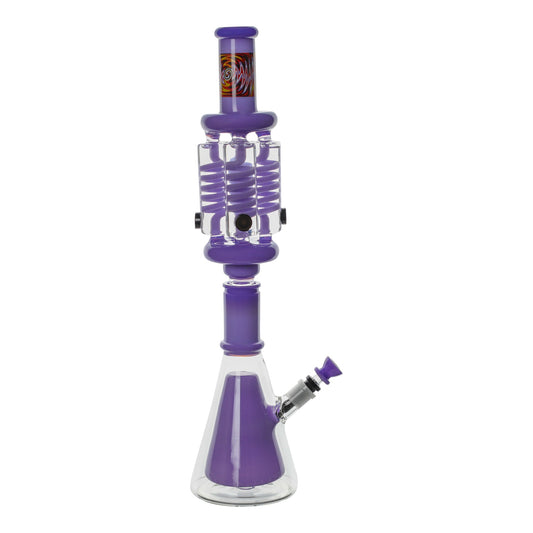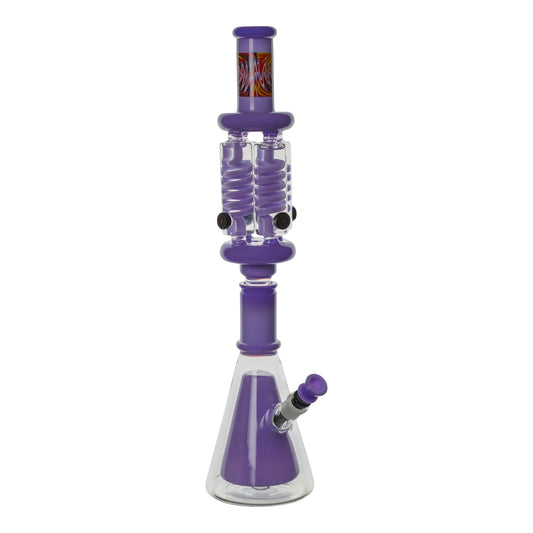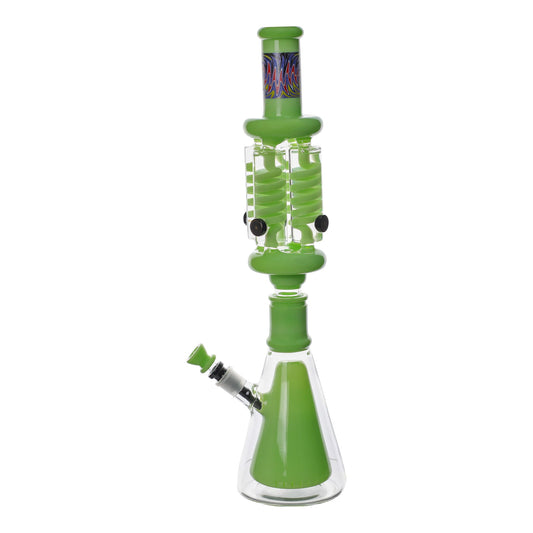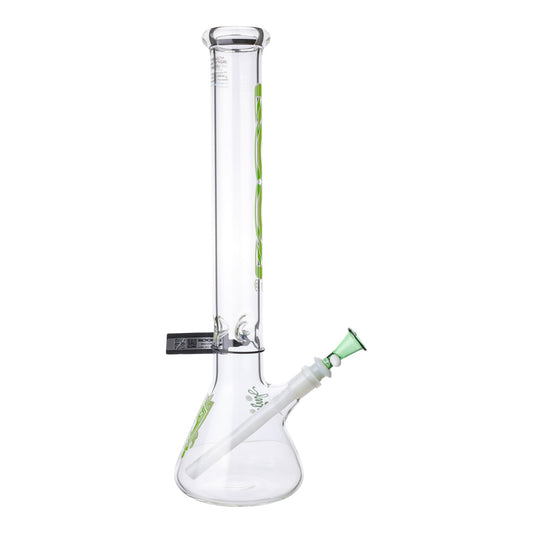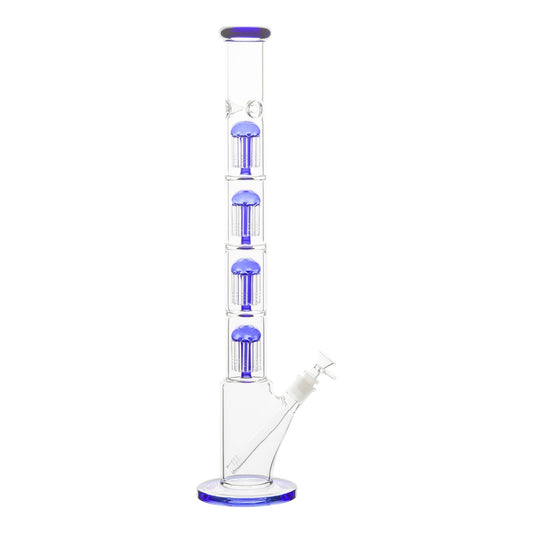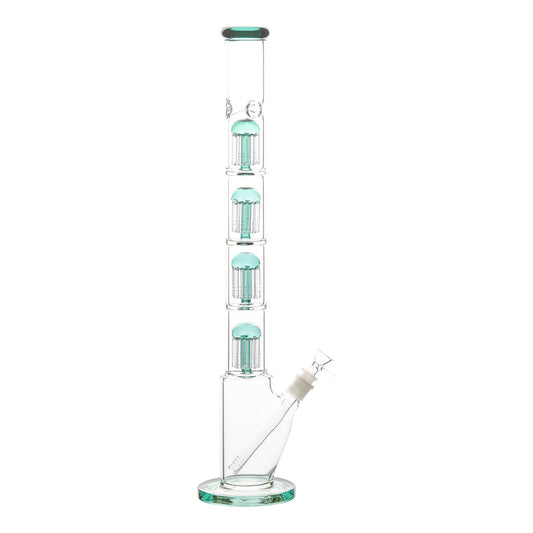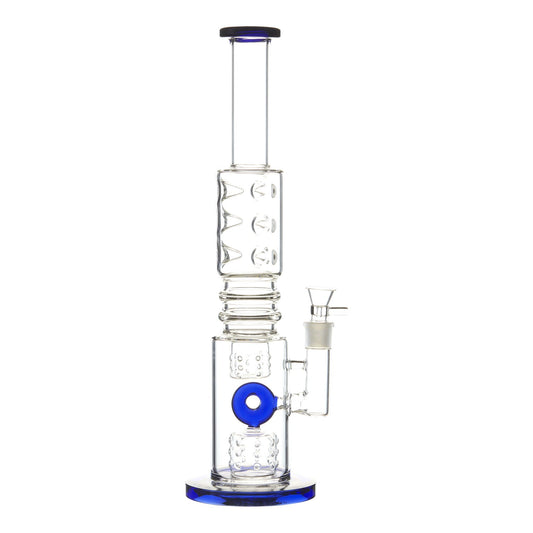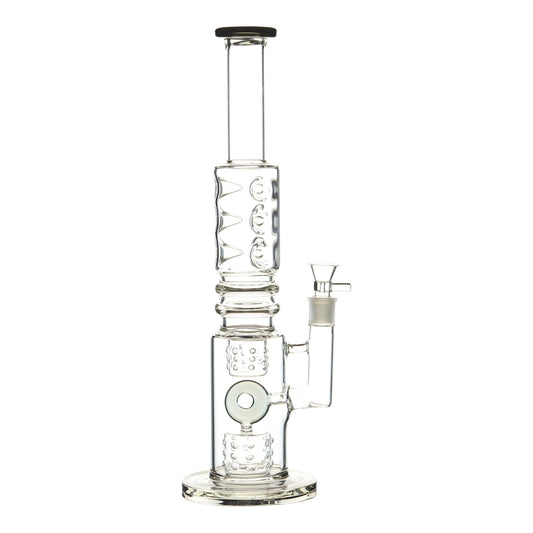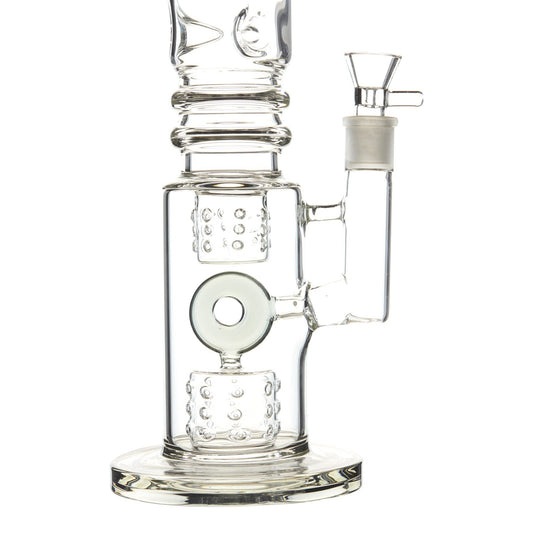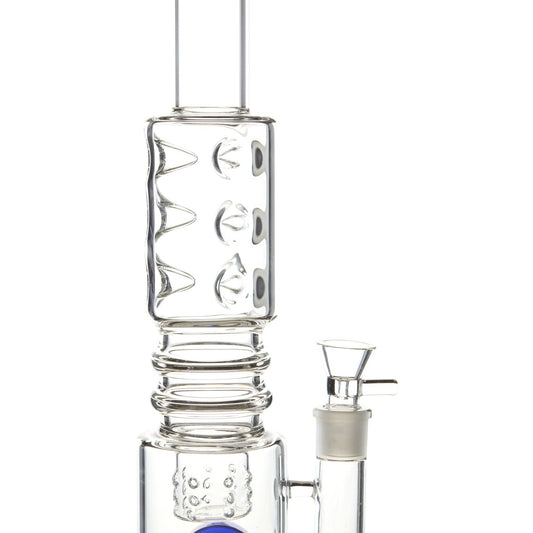Autoflowers have come a long way since the early days and modern strains are more than able to compete with regular photoperiods in terms of yield and quality of the final product. When it comes to growing cannabis, there are lots of things to consider such as what strain to grow, whether to grow indoors or outside, and if an autoflowering strain or a photoperiod strain should be chosen. Most home growers end up having an indoor grow setup, but there are huge advantages to growing autoflowers outdoors and it’s a fun way to switch things up. While it might seem more difficult to grow outside, an autoflower outdoor grow is actually very simple and affordable, making it a great option for beginners with a sunny space. Whether it’s one or two plants on a south-facing balcony or multiple plants in a grow bed or greenhouse, there’s lots to love about growing autoflowers outdoors. Read up on all the basics about autoflower strains, plus follow the step-by-step guide to growing autoflowers outdoors so you’ll have a successful harvest.
What are autoflower seeds?

When it comes to choosing seeds, the sheer number of choices can be overwhelming. To make it easier, cannabis seeds fall into two main categories, regular photoperiod seeds or autoflower seeds. All herb plants go through a four phase life cycle, which includes the germination, seedling, vegetative, and flowering stages. In nature, the plant will only begin flowering when the days begin to get shorter. With less natural sunshine and daytime hours, this signals to the plant that there is a change in the seasons, so it begins to stop putting energy into growing larger and changes over to the production of buds. Normal photoperiod seeds that are grown outdoors follow this cycle naturally, however when grown indoors, the artificial light schedule needs to be changed by the grower in order to trigger the flowering phase. Developed in the U.S. by a breeder named the Joint Doctor, autoflowering strains begin flowering on their own based on the age of the plant, not on the change in light. This was a revolutionary invention that made indoor growing much easier. There are several reasons why autoflowering strains are favored by novice and seasoned cultivators alike:
- Autoflowers have much shorter life cycles than regular photoperiod seeds. This means they require fewer resources and time to grow. Plus cultivators won’t have to wait as long to have potent smokable flowers.
- There’s no need to monitor or switch the light schedule, which is one less thing to worry about.
- Because of their short growth cycle, autoflower strains are shorter and smaller than photoperiod strains, growing to a maximum of roughly 12-40 inches (30-100 cm). This makes them desirable for indoor grows, small grow spaces, and those who want to be discreet.
- The short, approximately 10 week lifespan means cultivators can grow and harvest multiple crops in a single season.
- Autoflowers are very resilient, making them great for outdoor setups as well.
- They don’t need to be transplanted since they mature so quickly.
- The shorter grow cycle means less time for diseases to develop in unchecked environments or for pests to get out of control and ruin the crop.
Growing autoflowers outdoors vs indoors

Autoflowering strains can be grown both indoors and outdoors successfully, though most cultivators choose them for indoor grows due to their small stature, which can fit in tiny grow spaces like converted closets. However, growing autoflowers outdoors is also a great option since the plants won’t get too tall and growers can remain discreet. One of the biggest reasons for growing autoflowers outdoors is the cost. Outdoor grows are much cheaper than growing indoors since very little equipment is needed. The plants soak up the natural sunlight instead of requiring artificial lights, ventilation setups, and watering systems that suck energy 24/7 and add to the electricity bill. Rainwater can also be utilized to partially water plants depending on the location and there’s no need to add tons of artificial nutrients to the growing medium when cultivating right in the natural soil.
Besides the cost, there are a few other differences between growing autoflowers outdoors vs indoors, both with their own unique set of advantages and drawbacks. A few advantages to having an autoflower outdoor grow setup is that it is a more organic and natural way to grow with less additives and chemicals used in the process and that there is less time, work, and maintenance needed for an outdoor grow. This doesn’t mean that autoflowers can be planted outdoors and forgotten, but there will be less to worry about than growing indoors. Additionally, outdoor plants get higher levels of UV radiation than even the highest quality indoor light can provide so the plants will grow stronger, have higher yields, and have more resin production than indoor grown flowers. Some say this makes them taste better too! Disadvantages to growing autoflowers outdoors consist of having less control over the environment (huminity, light, temperature, etc.), thus creating a riskier operation; timing matters outside and plants grown too late in the season will not reach their full potential; and it’s also possible to have rogue pollination occur or pest and mold issues that are harder to take care of. Male pollen can be carried with the wind for miles and end up pollinating outdoor flowers, ruining a hardy crop.
Do autoflowers take longer outdoors?
An autoflower outdoor grow sometimes takes slightly longer than an indoor grow setup, but the difference is very minimal. This usually ranges from a day or two to an extra week. Cultivators aren’t exactly sure why this change occurs, however it’s believed that outdoor growing in beds instead of pots and not having full control over the environment are some of the main reasons why this occurs. Still, autoflowers grown outside will take somewhere between 8 to 12 weeks to grow depending on the strain.
How much can an outdoor Autoflower yield?
In the past, most 420 enthusiasts avoided autoflowers, thinking they were geared towards beginners. At the time, photoperiod strains were far superior with much larger yields, more potent buds, and a nicer aroma than autoflowers, but this is not the case today. Modern autoflower strains are able to match if not surpass some photoperiods with high yields and great flower production. An outdoor autoflower will typically yield around 150–175 grams (5 to 6 ounces) of flower per plant. This can vary widely depending on the specific strain that’s grown and environmental factors such as the temperature, humidity, sunlight, pot size, and more. Overall, growing autoflowers outdoors will typically produce larger buds with more resin due to the stronger UV radiation it receives outside. The high yield and lower costs make outdoor grow operations a favorite of home growers.
Are Autoflowers worth growing outdoors?
Absolutely! This is especially true if you want to do some guerilla gardening or if you’d like to be discreet about what you’re up to. These small and easy-to-grow plants check all the boxes and won’t grow higher than the fence, alerting the neighborhood. If you’ve already tried your hand at an indoor grow, experiment growing autoflowers outdoors and see the difference for yourself. While the life cycle will more or less remain the same, the entire grow process is less time consuming with much less monitoring to do, it’s easier on the budget, there can be higher yields and a better product, plus you’ll get to spend more time outside.
What should you consider before planting?

There’s lots to think about when starting an outdoor grow for the first time. These choices will have a direct effect on the outcome of the harvest and should be chosen carefully. Some of the most important things to consider include when to start planting, what will you plant in (pots, grow bags, garden bed, directly in the ground, etc.), what autoflower strain to choose, what location is best, and how to water the plants (watering can, hose, automatic watering system, etc.). Whether growing indoors or outside, it’s crucial to keep a grow journal either by using old school handwritten notes or with a grow app to track all of the above decisions to see if they worked well or if changes need to be made for the next crop.
When should I plant my autoflowers outside?
All herb plants grow best with lots of strong light. 16 hours of sunlight is the best, but plants should never get less than 10 hours of sunlight to grow. The location and environment makes a big difference when planting autoflowers outside. Start an autoflower outdoor grow sometime between late April and the end of July. In areas that have summer storms or snow, wait until there’s no frost on the ground and for storms to pass before planting outside. Preparations for the grow can be done earlier to save time. In locations that have 10 hours of light and decent temperatures year-round, it’s possible to start an autoflower outdoor grow any time of the year as long as there’s no bad weather in the forecast. The ideal temperature for outdoor plants is between 75-85 degrees Fahrenheit (23.9-25.4 degrees Celsius), but will grow in anything from 60-88 degrees Fahrenheit (15.6-31.1 degrees Celsius). Anything lower or higher than this will result in stunted development, lower yields, poorer quality flowers, and could lead to the death of the plant if the dramatic temperature persists for a long period of time. Certain autoflowering strains are more resistant to colder or hotter temperatures than others, so choose the strain wisely.
What kind of container should I plant my autoflowers in?
This is really dependent on the preferences and available space of the cultivator. Many home growers use grow bags or pots outside since they are easy to move around if needed. Any container should have lots of holes on the bottom and sides for adequate drainage. If you haven’t grown any plants outside before, you may not know what locations get the best sunlight and when. If growing in a pot or bag, it’s possible to move the plants around the outdoor space or even indoors if needed. Because of their short lifespan, autoflower strains don’t need to be planted in extra large pots and don’t require transplanting. They can be planted directly into 5 gallon grow bags or pots, which is the standard for most autoflower outdoor grows. Dwarf strains grow great in small 3 gallon pots, which will save on soil, while large super autoflowering strains will need to be planted in a 5 or 10 gallon pot to reach its full potential. Outdoor hydroponic setups, greenhouses, and garden beds are also commonly used. Be sure to do your due diligence prior to selecting a location for these outdoor grow setups since this makes a big difference in the final product and will be difficult to change later. Growers on a budget can also simply plant the autoflower seeds directly into a hole in the ground. This will allow the plant’s root system to grow as large and deep as it desires without worries about becoming root bound.
What kind of soil should I plant autoflowers in?
If growing autoflowers outdoors in containers, be sure there’s lots of holes in the pots for drainage. Plants need oxygenated and well-draining soil for the best root development. This can be achieved by mixing the soil with perlite or coco coir. Both of these increase water retention and aerates the soil. The most basic combination is 80% normal potting soil with 10% each of coco coir and perlite. Each grow season, cultivators may tweak this combination until they find the best one for their setup, strain, and environment. They also experiment with adding things like biochar, seaweed, guano, worm castings, and fish nutrients to better feed their plants.
It’s also possible to plant autoflower seeds straight into the ground, which is called direct sowing. This ensures that there will be no unnecessary stress to the plant’s roots or need for transplanting, which is very risky for autoflowers. To do a direct sow, be sure that the soil is well tilled and doesn’t have a hard upper crust. The soil must also be above 70 degrees fahrenheit, however the warmer the soil, the better the germination rate will be. The best soil for potting and planting in the ground is a sandy or sandy loam mix, but anything other than clay based soils will work. Germinate the autoflower seeds indoors for a higher rate of success and always check that there are no animals such as gophers around that will eat your plants from below.
Do autoflowers need direct sunlight?
An autoflower outdoor grow needs to be in direct sunlight for the plants to receive enough UV light to grow to their potential. At the bare minimum, outdoor plants should get 10 hours of sunlight per day with 12 to 16 hours being optimal. Growers that use pots or grow sacks are able to move the plants around to follow the sunlight and capture more UV rays. The sun moves depending on the month of the year and plants that are planted in the ground or in non-movable grow beds may not receive as much sun as they can during the entire grow cycle.
Easy outdoor grow setup for beginners

As noted previously, the easiest and most affordable outdoor grow setup is germinating seeds indoors and planting them directly into the earth with a little nutrient-rich soil. This only requires a good location that gets lots of direct sun, a small amount of soil, and a watering can or hose. Check with the seed bank to know the average size of the strain and always leave more than enough space between plants so that they aren’t touching at all. Touching branches can create a space for mold to grow and allow pests to quickly move from one plant to another. The most recommended outdoor grow setup for beginners is to use pots or grow sacks so the plants can be moved around if needed. This requires a small investment in potting soil and well-draining pots. Choose a spot and prepare the pots ahead of time so they’re ready to go once the autoflowering seeds have germinated. Keep the plants spaced out so they each get adequate sunlight and move them farther away as the plants get larger. While not necessary, an automatic watering system can be set up and controlled with a timer so they are watered on a regular schedule. This allows for even less work to be done, though the plants should still be checked regularly for signs of disease, over or under watering, nutrient levels, stages of development, and pests in order to have healthy plants and a high yield.
Step-by-step guide: How to grow autoflowers outdoors

Autoflowers are very easy to grow, which makes them a great choice for novice cultivators. Outdoor grow setups may be simpler and require less equipment than an indoor grow, but there are different risks involved such as animals that may find a snack with your plants or an increased number of pests and insects that are present outdoors (we are in their home after all).
Equipment list:
- Autoflowering seeds
- Paper towels or cotton balls
- Container with a lid
- Garden bed, pots, grow bags, or a sunny location in the ground
- Potting soil
- Watering can or hose long enough to reach the grow area
- Nutrients for vegetative and flowering stage
Growing autoflowers outdoors step-by-step instructions
- Germination is a delicate process and will typically have a higher success rate when done indoors. Begin germinating the autoflowering seeds using either the cotton balls or paper towels. Place paper towels at the bottom of a container and spread out the seeds. Spray the paper towel with warm or room temperature water so that it’s saturated, but isn’t too soggy. Put the lid on the container and place it somewhere that’s dark and warm such as a kitchen cupboard. The seeds will take a few days to sprout, but be sure to continuously check the container to make sure that the seeds and paper towel is still wet. If the seeds ever dry out completely, they will never germinate. When the tap root becomes as long as the seed, it’s time to plant it outdoors! The autoflower seeds can also be germinated right in the soil with the direct sowing method. Just prepare a garden bed or pot, make a very shallow hole, insert a seed, cover with soil, and keep it moist. The temperature should be around 70 degrees Fahrenheit or warmer for the seed to sprout.
- If the seeds were germinated indoors, plant them in pots, directly in the ground, or in a prepared garden bed once the tap root is large enough. A mister is best during this phase since lots of water can drown the tiny plant. Be wary of overwatering at this stage. The seedling should reach the surface of the soil in roughly 10 days. It is still quite delicate at this time and can be kept indoors to reduce risk, however this requires transplanting, which creates stress on the plant.
- Once the first set of true leaves are seen, the seedling has moved to the vegetatvie phase. At this time the plants should be watered with a low concentration of nutrients to help it thrive. It also needs lots of strong, direct sunlight during this stage. Water the plants when the soil is about 65% dry. There’s no set watering schedule for outdoor plants and it can be hard to predict since some days will be very hot and the plant will need more water, while others may be overcast.
- You may want to install a trellis, tomato cage, or bamboo post to give the plants support as it grows rapidly during the vegetative stage, though this is optional.
- When a certain amount of time has passed in the vegetative stage, the plant will automatically begin to flower. Read up on the strain to know the average time this will take so you can predict when it will flower. You should be fully prepared for the flowering stage and for harvesting. To know when to harvest, use a jeweler's loupe to get a closer look at the trichomes. The trichomes will begin clear, then turn cloudy, before finally becoming amber colored. For the most potency and the best combination of effects, harvest the buds when roughly 30-50% of the trichomes have turned amber. The buds should be dense and hard to squeeze. It’s better to use your own judgment and preferences than to harvest exactly when the seed bank says so, since there are many factors that can affect the harvesting time. Indicas and indica dominant hybrid strains are quicker than sativas, which may need an extra few days or up to a week before it’s ready to harvest.
What are common problems when growing autos outdoors?
Cultivators growing autoflowers outdoors face most of the same issues as those with indoor grow setups. Because of the open environment, there are a few other challenges outdoor growers should watch out for including animals munching on the plants and stoners with sticky fingers discovering your crop (they’ll wait until it’s ready to harvest to steal it of course). These are the most common problems when growing autoflowers outdoors:
- Pests - Like normal outside gardens, an autoflower outdoor grow is more susceptible to certain pests, which are more difficult to find indoors. Corn earworms cause a significant amount of damage and eat through flowers. Also keep an eye out for aphids, hemp russet mites, and Eurasian hemp borers. Use natural, organic, or food-safe pesticides if needed.
- Diseases - Just like other plants, there are several types of diseases that can take over an herb plant. By far the most common is powdery mildew, which leaves a white dust-like fungus over the plant’s leaves and doesn’t allow the plant to feed on nutrients. Prevent this by making sure not to overwater and maintaining at least a foot of space between plants for aeration. Other common diseases include bud rot, leaf spot, root rot, blight, and mildew.
- Animals - There are many animals that are drawn to strong-smelling plants like cannabis. Cats, dogs, deer, squirrels, and rodents can decimate your plants and ruin your hard work. Check the entire area for signs of burrowing rodents like gophers, who love munching on roots. If cats or deer are in the area, use chicken wire to create a cage for your plants so they can’t be touched.
- Stoners - Other 420 enthusiasts may happen upon your crop and decide it’s theirs for the taking. Luckily, autoflower strains grow a lot smaller than normal plants and will remain shorter than the fence, making them harder to detect in an enclosed yard or garden. If theft is a potential issue, plant herbs and vegetables around the plant to disguise it and mask the smell. There are also low-odor autoflowering strains that are very difficult to detect. A simple alarm system or camera can also be used to monitor the plants, though never use a motion sensor light since this will disrupt the hours of darkness the plant needs at night.

Drying, trimming, and curing your autoflowers outdoors
After growing and harvesting your outdoor autoflowers, there’s still some time to go before you can celebrate with the first joint from the crop. If you live in a humid place, use the wet trimming method, otherwise do a normal dry trim. To dry trim, cut the large leaves off and hand the branches to dry. Drying can be done in a greenhouse, cardboard box, grow tent, herb drying rack, garage, or an empty closet. Just use some string or twine to create a place to hang the buds up. To avoid mold and mildew, the humidity should be around 55-65% and the branches shouldn’t be too crammed together to allow for airflow between the buds. The temperature should sit at roughly 60-70 degrees Fahrenheit. Keep in mind that the buds will need to remain hanging for roughly 10 days to 2 weeks in order to fully dry on the inside. If you notice that it’s drying too slowly, there’s a huge risk for mold. Too fast or too hot and the terpenes will start to be damaged. Use a portable air conditioning unit, fans, humidifier, or dehumidifier to create the perfect drying environment that will preserve the quality of the flower.
After fully dried, it’s time to dry trim the buds. Use a pair of scissors and clip away any leaves or plant material that won’t be smoked. Try not to touch or disturb the trichomes as much as possible to retain potency. Work above a trim tray to keep the mess contained and save any accidental clippings. The final step is curing. Place all the trimmed buds in large airtight containers for about 2 to 4 weeks to cure. Never pack the containers. Instead fill them around ¾ full to give the flower breathing space.
Now that you know the ins and outs of growing autoflowers outdoors, are you ready to try your hand at an outdoor grow? Visit our website to choose from a wide range of autoflowering seeds that are great for the outdoors and don’t forget to pick up essential smoking accessories like herb storage containers, rolling papers, mini bongs, glass pipes, heady glass bongs, dry herb vaporizers, bubblers, and more to test out your next harvest.








